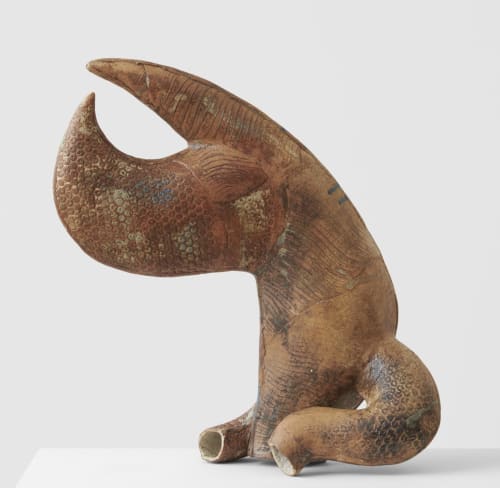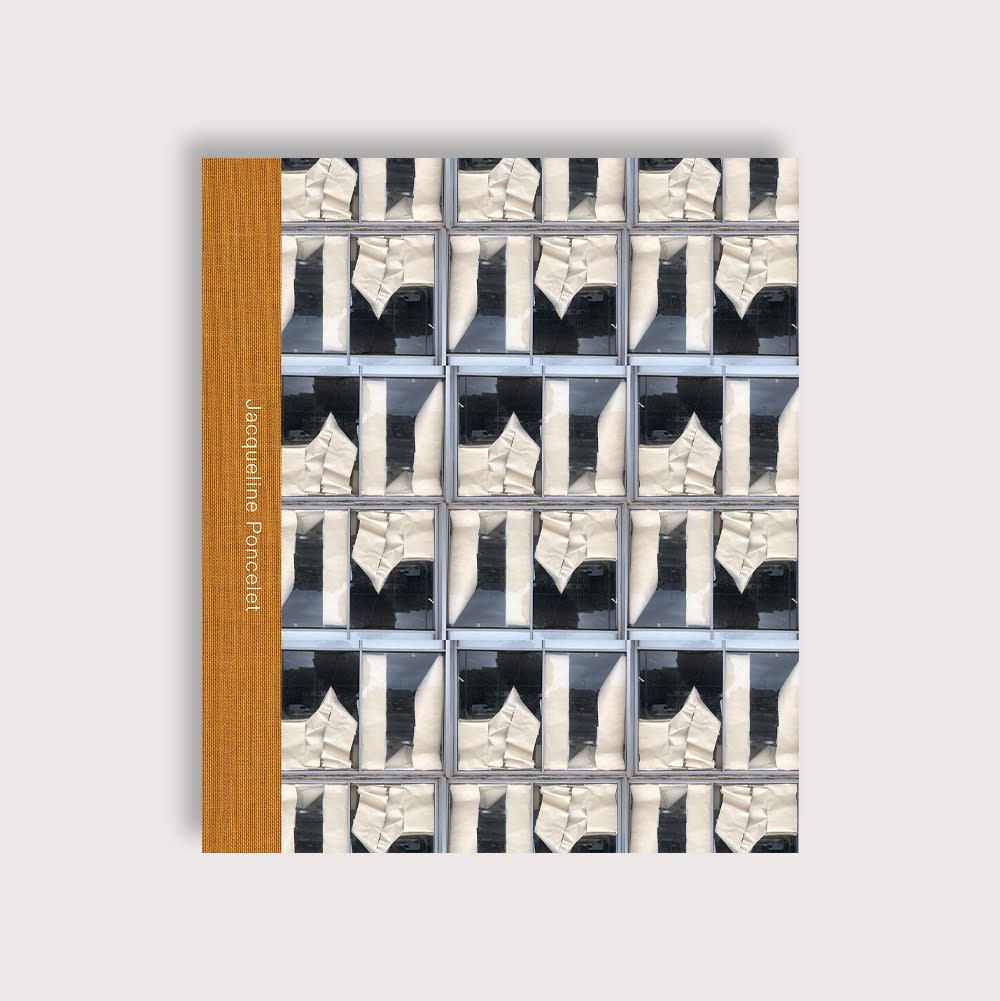Jacqueline Poncelet: this, that and the other

Richard Saltoun Gallery presents a solo exhibition by Belgian-born, London-based artist Jacqueline PONCELET (b. 1947), whose pioneering approach to colour, material, surface, and space has redefined the boundaries between fine art and craft. Spanning fifty years of work, this, that and the other brings together Poncelet’s early sculptural ceramics, large-scale drawings, and small paintings from the 1970-1980s with recent watercolours, tracing a continuous dialogue between material, process, and pattern across diverse media. This is Poncelet’s first London solo presentation in over 20 years, following her major retrospective at the Middlesbrough Institute of Modern Art (MIMA) last year, for which she won the prestigious 2021 Freelands Award.
Working on the fringes of the American Pattern & Decoration and the French Supports/Surfaces movements, Poncelet’s practice has never been confined to a single medium, moving fluidly between ceramics, painting, drawing, photography, textiles and site-specific design. Unlike many of her male contemporaries in the New British Sculpture movement, her work remained deeply engaged with material instability, ignoring the boundaries between fine art and craft.
She first gained recognition in the 1970s for her sculptural ceramics, which explored modular variation and repetition. A selection of small vessels on view from this period demonstrates how she transformed decorative objects into works of art through subtle interventions in pattern and form, challenging traditional expectations of ‘craft’ and functional design.
A major turning point came in 1986, when she participated in the Venice Biennale, presenting sculptural ceramics resembling fragmented, tangled limbs, starkly arranged on a white platform. These works abandoned traditional associations with ceramics, instead evoking disembodied, visceral forms, reflecting both personal and cultural tensions at the time. This approach is echoed in exhibited works such as Handbag (1985) and Object in Four Parts (1986), where Poncelet embraced a more architectural, constructivist sensibility. These pieces feature folded, stacked, and interlocking elements, their surfaces enriched with embossed wallpaper textures and painted finishes, reinforcing her fascination with pattern, repetition, and material complexity. At times resembling fragmented architectural facades, at others recalling the draped quality of textiles, these ceramics redefine the relationship between form and function, marking a pivotal moment in her practice.
Such sculptural works are shown alongside large-scale drawings and small paintings from the 1980s, which reflect her exploration of form, space and structure on a two-dimensional plane. Using interwoven lines, gridded compositions, and layered washes of colour, Poncelet experimented with the optical tension between depth and flatness. Her exhibited Untitled drawings almost recall architectural blueprints, mapping out imagined spaces and objects through multiple shifting perspectives at once. Her small paintings from this period reflect similar ideas, typically juxtaposing rigid geometric structures and definitive blocks of colour with more organic, meandering forms. This playful push and pull between order and fluidity, structure and improvisation, remains central to her work.
The grids and weaves of these works are taken a step further by Poncelet with her composite paintings, such as Kiss c.1995, which literally integrate handwoven elements, digital printing, and painted forms, layering different processes, textures, and imagery within a single surface. Echoing the grid-like structures of her early paintings, these works continue Poncelet’s interest in probing the tension between precision and spontaneity, structure and disruption.
The focus on pattern and movement is central to her more recent works on paper included in the exhibition. A selection of smaller geometric watercolours from 2009–2023 are characterised by fine pencil lines, intricate grid formations, and vivid colour. Inspired by the natural world and the changing seasons, these meticulous works balance precision with fluidity, using carefully constructed frameworks to explore rhythm, optical movement, and spatial depth.
Her most recent watercolours from 2023, created for her retrospective at MIMA, take a more gestural, expansive approach, reflecting an increasing interest in landscape and memory, particularly inspired by her time in Wales. Built up in layered washes of colour, these works move away from the structured geometry of her earlier pieces, embracing a more organic, shifting visual language that evokes horizons, changing light, and atmospheric transformation.
Poncelet’s work is held in major public collections, including the Victoria and Albert Museum, Tate, and the Museum of Modern Art, New York. Though historically overlooked in favor of male contemporaries, her contributions to British sculpture, ceramics, textiles, and public art are now receiving overdue recognition.
this, that and the other showcases Jacqueline Poncelet’s five-decade exploration of colour, material, pattern, and space, highlighting her enduring impact as one of the most important living artists working at the intersection of art and design.
For press enquiries, please email Sonja Teszler: sonja@richardsaltoun.com
For sales enquiries, please email: sales@richardsaltoun.com
- X
- Tumblr
Artist page
Richard Saltoun Gallery| LONDON
41 Dover Street,
London W1S 4NS
RICHARD SALTOUN GALLERY| ROME
Via Margutta, 48a-48b
00187 Rome
RICHARD SALTOUN GALLERY| NEW YORK
19 E 66th St
New York, NY 10065
Opening Hours | LONDON
Tuesday – Friday, 10am – 6pm
Saturday, 11am – 5pm
OPENING HOURS | Rome
Tuesday - Friday, 10:30am - 6pm
Or by appointment
OPENING HOURS | NEW york
Monday – Friday, 11am – 6pm
Contact
London:
+44 (0) 20 7637 1225
info@richardsaltoun.com
Rome:
+39 06 86678 388
rome@richardsaltoun.com
New York:
+1 (646) 291-8939
nyc@richardsaltoun.com
Mailing List
We use cookies on our website to improve your experience. You can find out why by reading our Privacy Policy. By continuing to browse our site you agree to our use of cookies.
Join our mailing list
* denotes required fields
We will process the personal data you have supplied to communicate with you in accordance with our Privacy Policy. You can unsubscribe or change your preferences at any time by clicking the link in our emails.

















